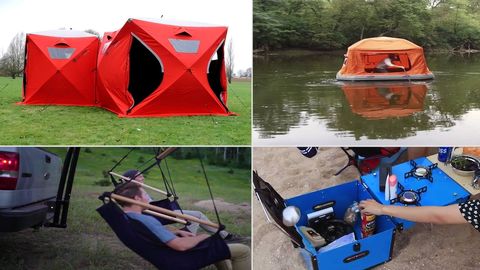- A group of 20-plus students from the Eindhoven University of Technology constructed the Stella Terra solar-powered car. It has now completed a 620-mile test drive across Morocco without stopping to recharge.
- The team constructed the off-road vehicle themselves and it was made to handle conditions, from riverbeds to mountain trails.
- Students claim the technology is 10 years ahead of the current market.
A team of students wasn’t worried about locating the nearest charging station on its recent long-distance journey. In an impressive feat, the students’ electric, solar-powered car recently completed a 620-mile trek without ever needing to stop and recharge. The off-road vehicle—called the Stella Terra—drove from northern Morocco to the Sahara Desert, all while navigating loose sand, forests, narrow mountain trails, and dry riverbeds.
“It was an incredible trip with a positive ending,” Wisse Bos, team manager for the group of 20-plus Eindhoven University of Technology students who constructed the solar-powered car, said in a news release. “Stella Terra’s efficiency was hard to predict. That’s why we weren’t sure if we would make it on solar power.”
But the car came through with flying colors. Stella Terra sucked 30 percent less energy than the team predicted, allowing the vehicle to accomplish its 620-mile drive using just the Sun’s energy that was converted through solar panels on the roof. Following extensive testing in the Netherlands, the team wanted to find a Sun-filled trip that included a diversity of landscapes.
More From Popular Mechanics

“It is already difficult in normal conditions to build an energy-efficient car that can handle rough conditions, let alone to integrate solar panels into the car as well,” Maarten Steinbuch, mobility expert and TU/e professor, said in a news release. “I haven’t seen anyone do that yet.”
The road-legal car—with a top speed of 90 miles per hour and weighing just 1.3 tons—isn’t just a stock vehicle with a few solar panels tossed on top. “We had to design almost everything for Stella Terra ourselves,” Bos says, “from the suspension to the inverters for the solar panels.”
The team says that the technology used to strip out weight and keep the vehicle comfortable across varied terrain is five to 10 years ahead of the current market. “We are pushing the boundaries of technology,” Bos says. “With Stella Terra, we want to demonstrate that the transition to a sustainable future offers reasons for optimism and encourages individuals and companies to accelerate the energy transition.”
Solar Team Eindhoven isn’t a one-off effort, either. The team has built efficient sun-powered cars in the past, and has won the World Solar Challenge in Australia four times in a row. “I expect that in five to 10 years electric cars will be part of our entire energy grid system,” Steinbuch says. “And when the home battery makes its appearance, it will even be possible to generate energy via a solar car and deliver it back to your home.”
To increase the range of the two-seater car, the team relied on crafting an incredibly lightweight design while improving the efficiency of the solar panels.
The team was anticipating a range of roughly 440 miles on a sunny day—even across mixed terrain—so the test proved that the car was even more efficient than anticipated. The Guardian reports that, using a rechargeable lithium-ion battery, the car’s converter was 97 percent efficient in turning the sunlight absorbed by the solar panels into electrical charge. Commercial solar panels often range in efficiency from 15 to 20 percent, and the most efficient still struggle to reach 50 percent.
Steinbuch believes what’s happening at the university has far-reaching implications. “Solar Team Eindhoven’s innovations,” he says, “could change the future.”
Tim Newcomb is a journalist based in the Pacific Northwest. He covers stadiums, sneakers, gear, infrastructure, and more for a variety of publications, including Popular Mechanics. His favorite interviews have included sit-downs with Roger Federer in Switzerland, Kobe Bryant in Los Angeles, and Tinker Hatfield in Portland.
